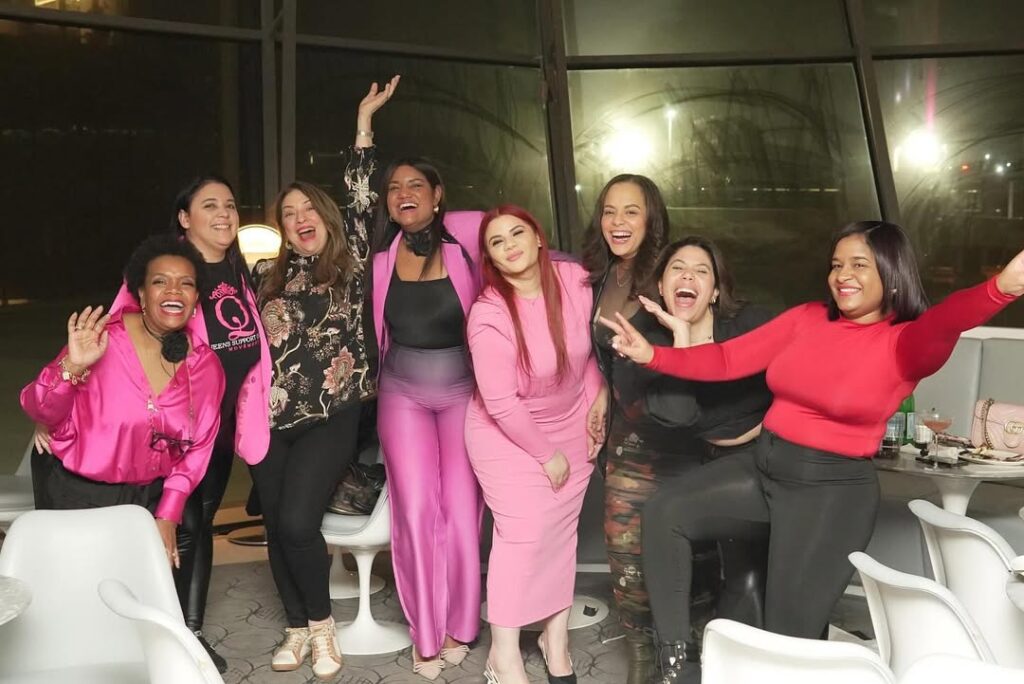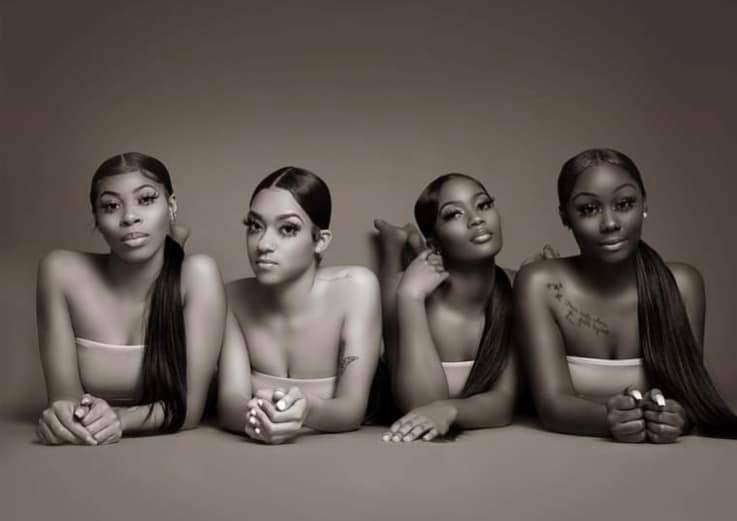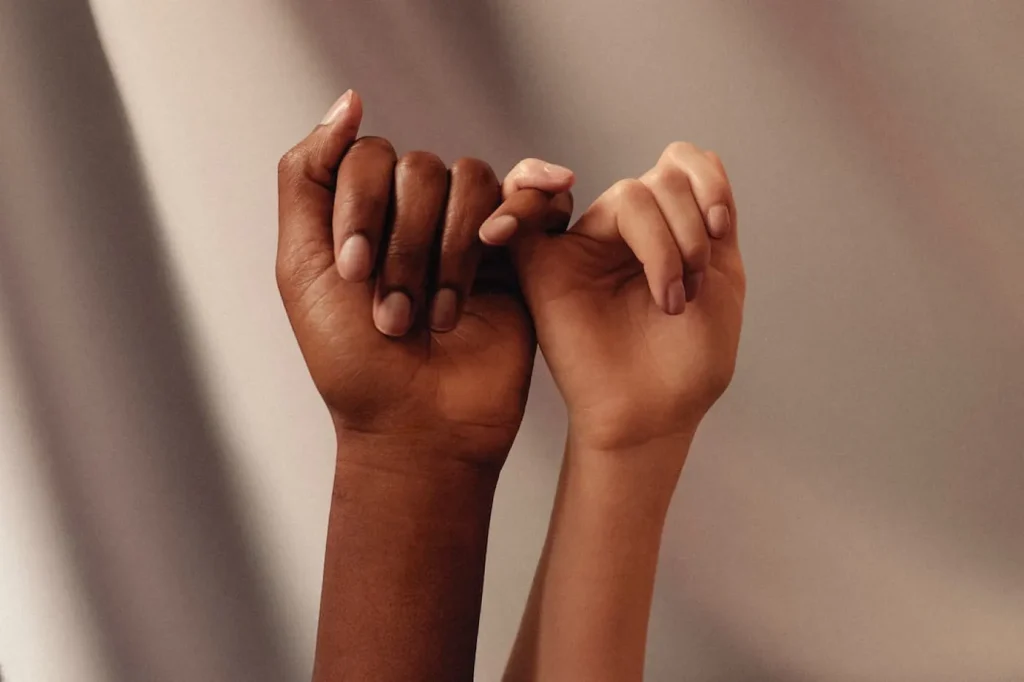In a world where women, especially Black women and women of color, are too often pitted against each other, a grassroots movement is rewriting the narrative.
It’s called Queens Supporting Queens, and it’s more than a hashtag—it’s a cultural shift, a call to action, and a healing balm for generations of internalized competition and societal marginalization.
What started as an affirmation on social media has evolved into a nationwide—and increasingly global—network of sisterhood, entrepreneurship, mental health advocacy, and community restoration. From the boardrooms of Atlanta to the nail salons of Los Angeles, and the college campuses of Harlem to the online spaces of TikTok and Instagram, women of color are lifting one another up in unprecedented ways.
This is the story of how Queens Supporting Queens is changing everything—and why it’s not just a trend, but a transformation.
The Birth of a Movement Rooted in Shared Struggle

The phrase “Queens Supporting Queens” first gained popularity online in the early 2010s, often attached to feel-good posts and mutual affirmations among women. But it didn’t take long for it to evolve into something deeper—especially among Black women and other women of color who have historically been sidelined in discussions of feminism, corporate leadership, and even wellness.
“I remember when I first saw the hashtag on Twitter in 2015,” says Aleesha Moore, a social worker and community organizer based in Chicago. “It wasn’t just cute—it felt like a counterspell to everything we’d been told about each other. That we couldn’t trust each other, that we had to compete, that only one of us could succeed.”
What many were beginning to recognize was the systemic undercurrent that made that kind of unity feel so radical. Black women and other marginalized women have long been told—explicitly and implicitly—that there was only room for one: the “token” hire, the “exceptional” friend, the one who “made it.”
But the Queens Supporting Queens movement said, what if we all made it?
Sisterhood as Resistance

According to 2023 data from the National Women’s Law Center, Black women continue to face some of the largest wage gaps, earning just 66 cents for every dollar earned by white, non-Hispanic men. Latina women earn 52 cents, and Native American women 55 cents. Add to that the compounded stressors of racism, colorism, and cultural erasure, and the stakes for solidarity become clear.
“Supporting another Queen isn’t just an act of kindness—it’s a form of resistance,” says Dr. Nia Henderson, a professor of Black Studies at Spelman College. “Every time a Black woman mentors another, buys from a woman-of-color-owned business, or simply says, ‘Sis, I see you’—she is pushing back against centuries of division and erasure.”
Movements like Buy Black, Support Black Women, and Melanin Magic Mondays have found strength under the broader umbrella of Queens Supporting Queens. Social media has been a key catalyst, with platforms like Instagram, TikTok, and YouTube becoming spaces of radical visibility and communal empowerment.
From Online Affirmation to Offline Action

In 2022, entrepreneur and beauty mogul Janell Stephens, founder of Camille Rose, launched a mentorship initiative under the Queens Supporting Queens umbrella, matching aspiring Black beauty entrepreneurs with seasoned industry veterans.
The results were immediate: increased brand visibility, access to funding, and a sense of confidence that comes from knowing you don’t have to go it alone.
Similarly, nonprofit groups like Brown Girl Rise in Portland and GirlTrek nationwide have adopted the Queens Supporting Queens ethos as a core value. They’re teaching girls and women of color not only to care for themselves, but to celebrate and elevate each other in everything from health and wellness to political advocacy.
“When one of us gets free, we open the door for the next one,” says Yolanda Jackson, a GirlTrek team leader in Baltimore. “That’s what Queens Supporting Queens looks like in real life.”
Healing Generational Wounds

This movement isn’t just about career success or public accolades—it’s also deeply personal. For many, Queens Supporting Queens is a step toward healing the trauma passed down through generations.
“Black and brown women have been taught to shrink, to be suspicious of each other, to think there’s not enough love, success, or safety to go around,” says Dr. Maricela Cruz, a psychologist specializing in intergenerational trauma. “This movement is helping us unlearn those patterns.”
Sister circles, healing retreats, and intentional friend groups have sprung up across the country, many under banners like #QueensHealingQueens. These safe spaces are doing the hard work of re-parenting and re-programming, often blending traditional practices like prayer and meditation with affirmations, community storytelling, and activism.
The Future of Queens Supporting Queens
As the movement grows, its impact continues to ripple across industries and generations. Gen Z creators are using the mantra to push for inclusivity in gaming, fashion, and tech. Millennial professionals are building wealth together through investment collectives. And Boomers are finding renewed purpose by mentoring the next wave of leaders.
And while the phrase has been commercialized and occasionally co-opted, its core remains unshakably rooted in love, trust, and collective healing.
“This movement isn’t about perfection,” says Tasha Lambert, a podcast host and author based in Oakland. “It’s about progress—and the power we unlock when we realize the crown on our sister’s head doesn’t diminish our own.”
Final Thoughts
Queens Supporting Queens is not just a hashtag. It’s a living, breathing ecosystem of support, joy, ambition, and care. It is what happens when women of color—long ignored, underestimated, and isolated—look at each other and say, “I’ve got you.”
And that kind of love? It changes everything.
